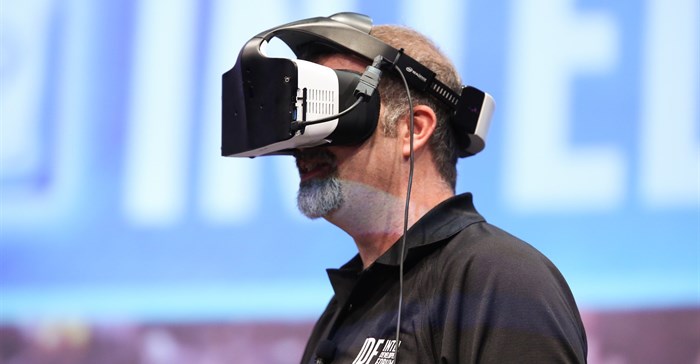
Related
Top stories



LegalNigeria to implement new tax laws from January 1 despite calls for delay, Tinubu says
Camillus Eboh 1 day

EducationChoosing a career? In a fast-changing job market, listen to your inner self – counsellor
Kobus Maree 1 day


Dubbed 'Project Alloy', Intel put their offering on display during the 2016 Intel Developer Forum. CEO Brian Krzanich revealed the device on the San Francisco stage and demonstrated its RealSense software that can perceive the user’s own hands. The device superimposes an image of it as part of the virtual reality experience.
Project Alloy separates itself from the pack by striving to make its interactivity far more intuitive than that of its competitors. The user’s hands become virtual tools rather than having to rely on an accompanying controller. Another defining feature of Project Alloy is its lack of any cord. This device is totally untethered, requiring no additional computing support.
Having all of its power onboard does mean that Project Alloy is one of the more bulky VR headsets. It is heavier and more cumbersome to wear than some competing devices in development, such as Sony’s PlayStation VR and Samsung's Gear VR headsets. What Intel’s Alloy loses in physical economy, it gains in user mobility. The user is free to move around without the danger of being shocked out of the virtual experience once a connected cord is pulled to its maximum length.
The headset’s depth-sensing camera and software, while successfully projecting the user’s hands as a functional part of the simulated scene, is still relatively rudimentary and produces a low-resolution result. Krzanich and his team aim to refine this to improve the accuracy of gestures and visual clarity.
Intel does not intend to put Project Alloy on sale alongside other VR headsets in development. The company will not be selling the device as an entrant to the retail VR market, but instead intends to sell the technology to another manufacturer in time for the virtual reality platform to go mainstream.
While the device’s RealSense system adds an impressive new slant to the mixture of developing VR technology, its application is not a guaranteed success for the world of gaming. There is no high demand in the videogame world for a player to be able to see or utilise their own hands as part of the experience – even on VR turf. It is no certainty that consumers will grab Intel’s tech for its RealSense feature for the benefit of gaming.
The technology does, however, hold interesting potential for many trade industries. It could be utilised as a training platform for mechanical engineers, for example. Being able to take apart the engine of a car in a virtual realm before doing so in real life may help auto-mechanic students. The same holds true for surgical practices. A medical trainee could benefit from Intel’s merged reality before graduating to real-life procedures.

Design Indaba inspires and empowers people to create a better future through design and creativity. We are an online publication (www.designindaba.com) with an annual festival and social impact Do Tank.
Go to: www.designindaba.com